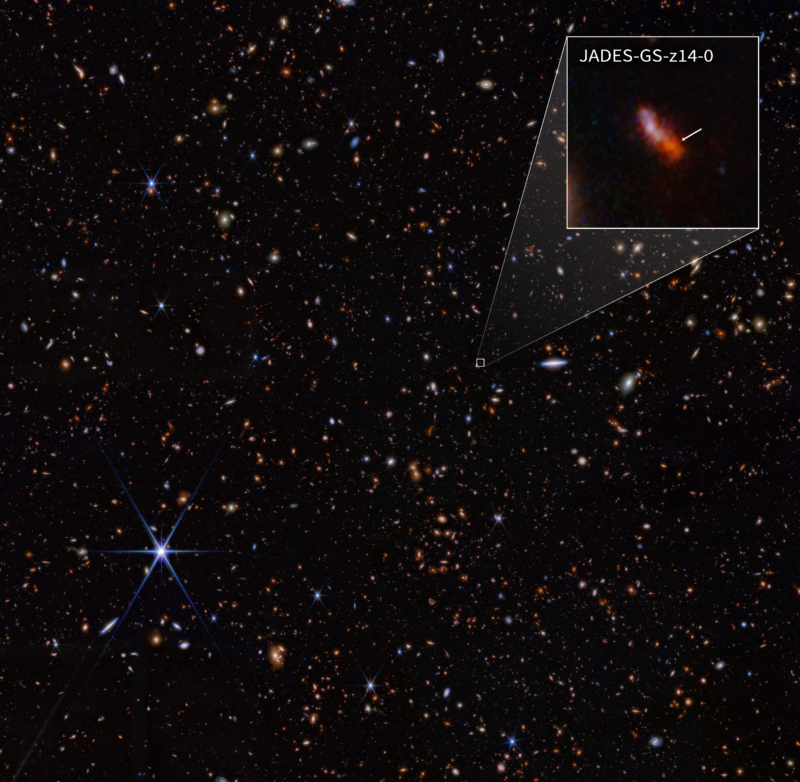Daily Telescope: The most distant galaxy found so far is a total surprise

Enlarge / Behold, the most distant galaxy found to date. (credit: NASA, ESA, CSA, STScI et al.)
Welcome to the Daily Telescope. There is a little too much darkness in this world and not enough light, a little too much pseudoscience and not enough science. We'll let other publications offer you a daily horoscope. At Ars Technica, we're going to take a different route, finding inspiration from very real images of a universe that is filled with stars and wonder.
Good morning. It's June 1, and today's photo comes from the James Webb Space Telescope. It's a banger.
This telescope, launched 18 months ago now, had as one of its express goals to deliver insights about the early Universe. The most straightforward way of doing so is to collect the faintest, most distant light that has spent the longest time traveling to reach Earth.

